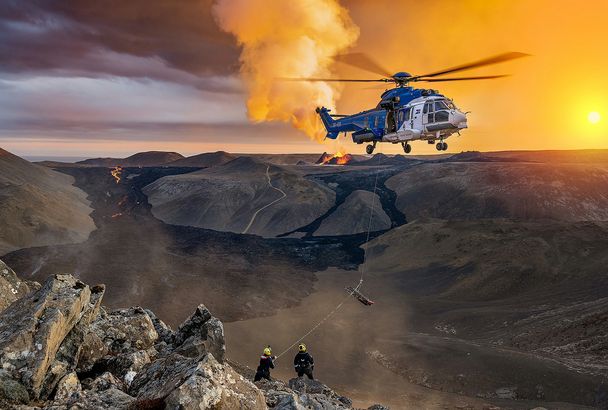H225 ICG pilots keep their cool after volcanic eruption
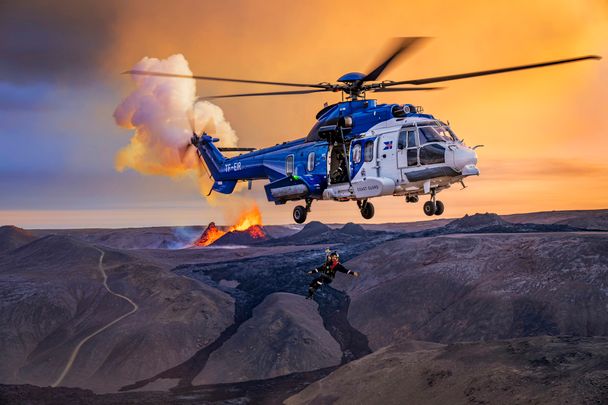
The Icelandic Coast Guard (ICG) and its fleet of three Airbus H225s is woven into the fabric of life in its home country in a way matched by few other operators.
ICG’s intimate relationship with society and the government was underlined early this year by a flurry of missions following a series of volcanic eruptions on the island, culminating in the loss of several homes in the fishing village of Grindavik as seen worldwide on TV. Crew Commander Þórarinn Ingi Ingason says: “I was in flight when the lava burned the homes down and those images were taken. Iceland is not that big and I have a lot of friends in Grindavik - I was receiving phone calls and messages asking ‘what is happening?’ These types of operations really impact your personal life.”
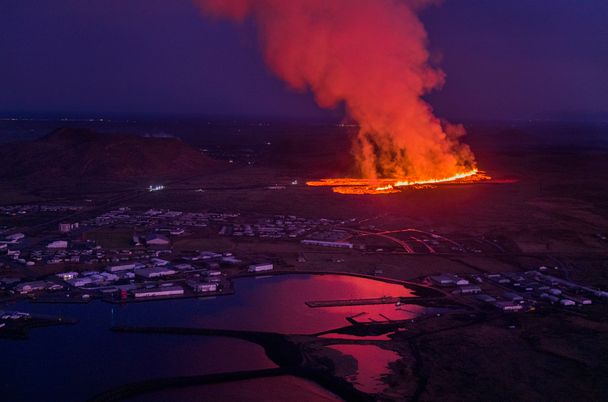
Risky business
While their main priority is rescue missions, the role of the Reykjavik-based ICG helicopter unit in the event of an eruption is initially to fly with scientists, and often a videographer, to measure the size of the crevasse, look for signs of any further fissures with thermal cameras and in general, to gather the big picture for the government authorities.
Regardless of the task at hand, volcanic activity brings a special set of risks and challenges. “We’ve had quite a few eruptions in Iceland in the last 10-15 years. We’ve seen lava reaching hundreds of metres into the air and bursting in the air - big splashes of lava the size of containers. The eruptions can be quite different each time, and sometimes we need to take into account ash. We always try to approach on the upwind side so that we don’t get the ash in the engines, especially at night,” Ingason explains.
“And even without ash,” continues Ingason, “there are toxic, sulphur-based gases. We have gas meters and we get a signal if it is above limits. I was flying once in the highlands to go to look at some fuel barrels on the ground. You couldn't see it but the gas had piled up in small low areas around the site. There was no indication of it at first. And there can be tremendous heat…”
H225: built to deliver in the harshest conditions
Scoping out the night walkers
With summer’s respite from the cold, ICG witnesses a greater influx of people exploring the highlands, with the result being a significant increase in medevac flights across Iceland’s rugged terrain. Ingason himself admits to being awed by the sight and doesn’t blame anyone - tourist or native - wanting to see it. He says: “Some people have never seen an eruption. For them it is a really powerful experience and even more so at night. We fly with night vision goggles (NVGs) looking for them. People don’t plan to get into trouble but when they are hiking without any experience, or are not fit, or have the wrong shoes then they can get into trouble.”
“You have some people walking on fresh lava with a crust and underneath it is 1,000°C and the lava is just waiting for the crust to break. People have been lucky not to be hurt. I was once flying at 8,000 ft in the east of Iceland above the clouds in the middle of the night and there was an eruption north of us and the orange light that it caused was really unbelievable. There were a lot of people walking in the night to see it and it was quite extraordinary,” continues Ingason.
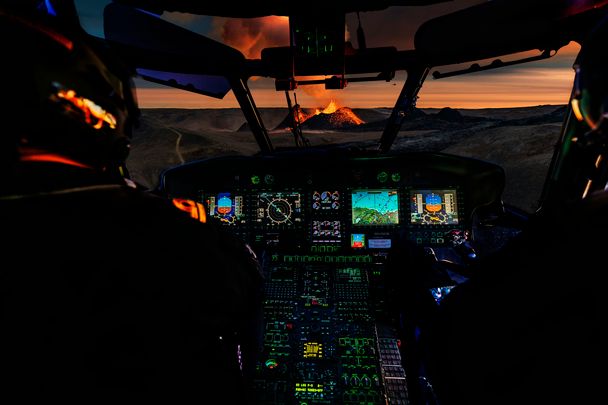
Configured to tackle both fire and ice
In addition to navigating volcanic eruptions, the ICG’s range of missions is wide, with operations varying between the seasons. The Coast Guard is often called upon by the government in winter to provide access to remote villages affected by heavy snowfall, braving freezing conditions with the aircraft’s indispensable de-icing system. The team is also prepared to tackle fires in the summer heat, equipping the H225 with a Bambi bucket.
Managing such extreme missions can be challenging, but Ingason praises the H225 for providing the comfort and ease needed to facilitate their operations. “The aircraft is extremely comfortable to fly. The helicopter performance is excellent and the pilot interface is really good. The autopilot is really something else - it’s a game changer.”
And to help ensure safe operations and optimal mission performance, ICG recently extended its HCare contract for the Part-By-the-Hour (PBH) solution, which covers all scheduled and unscheduled maintenance events for the H225 fleet. The contract also includes Airbus Helicopters' support for transport needs and the establishment of a local consignment stock to provide the best fleet availability.
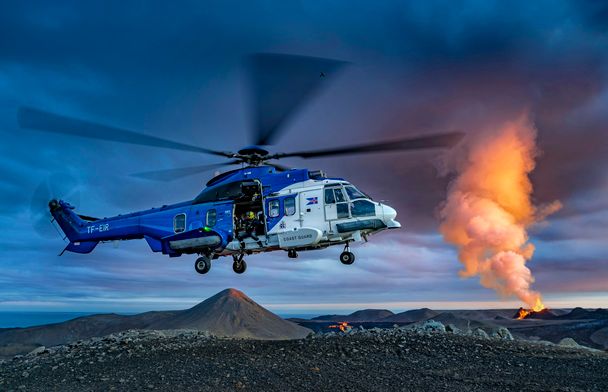
Never a dull moment
It doesn’t stop here - the Coast Guard also conducts all-weather SAR missions and is always ready to roll. Ingason states: “Often we are already airborne when we are tasked with a new mission so then we can respond immediately.” In addition to this, when on the ground, they are committed to being ready for take-off within one hour - but in practice the average is just over 30 minutes.
It all makes for a busy life - crews work seven days on, seven days off, with two crews on duty at any one time. Ingason, a father of two young girls, says: “It affects the family - my wife can’t really count on me to be there so she cares for the kids. I could unexpectedly be in several areas for two or three days at a hotel. But I really like it - you’re all in while you're at work and then if something needs to be done at home, you can wait and have two or three days uninterrupted.”
